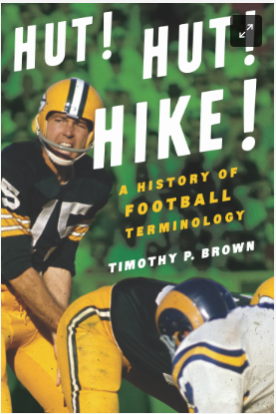The Western Wizard, From Prairie Puckster to NHL Pioneer
Hay's magic began in Regina, captivating crowds with his dazzling puck control and audacious offensive flair. He dominated the Western Canada Hockey League, earning a call-up to the Chicago Black Hawks in 1921. In the NHL's early ground-bound days, Hay became a revolution on skates. His pinpoint passing and creative maneuvers challenged the prevailing defensive strategies, paving the way for a more dynamic, puck-moving game.
Though his NHL career was cut short by injury and changing styles, Hay's impact was undeniable. He left behind a record as one of the league's first genuinely complete players, excelling offensively and defensively. His influence extended beyond the ice, as his advocacy for the forward pass ultimately led to its legalization in 1927, forever altering the game's landscape.
Hay's career wasn't just about statistics but artistry and innovation. He was a showman, a magician with a puck, leaving opponents bewildered and fans breathless. His legacy transcends his era, whispering through the history of hockey as a reminder that even the most unexpected corners can birth game-changing talents.
Herbie Lewis Duke of Duluth and Lightning on Ice
-Start of a Brilliant Career
Lewis' hockey origins lie not in the grand arenas of the NHL but in the frozen ponds of Calgary, Alberta. Born in 1906, Lewis honed his skating skills at a young age, quickly establishing himself as a standout for his exceptional speed. His talent propelled him to Duluth, Minnesota, where he played for the Duluth Hornets in the USAHA (United States Amateur Hockey Association). There, he earned his iconic nickname, likely inspired by a famous novel of the time.
Lewis' speed not only caught the eye of the Detroit Cougars (later renamed the Falcons and then the Red Wings), but it also became a strategic weapon for him. He joined the NHL in 1928, a time when the league was known for its physical, often brutal, style of play. Standing at a mere 5-foot-9, Lewis faced a significant physical disadvantage. However, he overcame this obstacle with his lightning-fast skating and unwavering tenacity. He carved out a niche as a defensive forward, disrupting plays with his relentless pressure and using his speed to create scoring opportunities for his linemates, a unique contribution that intrigued the hockey world.
-NHL Days of Glory
Lewis' most significant impact came during his tenure with the Detroit Red Wings. He formed a formidable line with Larry Aurie and Cooney Weiland, a trio dubbed "the best line in hockey" by legendary coach Conn Smythe. When Marty Barry replaced Weiland at center in 1935, the line's performance skyrocketed. This revamped unit led the Red Wings to their first-ever Stanley Cup victory in 1936, followed by another championship in 1937. Lewis' contributions on the ice were crucial to the Red Wings' success, as his speed and defensive awareness created a nightmare matchup for opposing teams.
While Lewis wasn't a prolific scorer, his speed and intelligence made him a valuable asset. He retired from the NHL in 1940, but his hockey journey continued. Lewis transitioned into coaching, leading the Indianapolis Capitals (AHL) to a Calder Cup championship in 1942.
Herbie Lewis' legacy is not just about his impressive trophy haul. He embodied the spirit of perseverance, proving that size wasn't always the defining factor for success. His exceptional speed redefined what it meant to be a defensive forward, paving the way for a future generation of smaller, faster players. Though not as widely remembered as some of his contemporaries, Herbie Lewis, the "Duke of Duluth," left an indelible mark in hockey history with a career built on speed, skill, and an unwavering dedication to the game, a legacy that the hockey world appreciates.
-Life and career bio of Herbie Lewis
Born April 17, 1906, in Calgary, Alberta, Canada, was Hockey Hall of Fame Left Wing Herbie Lewis. One of the great all-time skaters. Lewis's was not only a great skater but he was quick as lightening on the ice in the NHL playing for the the Detroit Red Wings. These skills and talents helped the Red Wings win two consecutive Stanley Cups in 1936 and 1937. He was inducted into the Hockey Hall of Fame in 1989.
Ebbie Goodfellow The Hockey Career of an NHL Legend
-Early Struggles and Unwavering Determination:
Born April 9, 1907, in Ottawa, Ontario, Goodfellow's path to hockey stardom wasn't easy. Undersized and initially rejected by junior teams due to his stature, he persevered, honing his skills in local leagues. His talent eventually caught the eye of the Detroit Falcons of the Canadian Professional Hockey Association (CPHA) in 1931. Goodfellow quickly established himself as a scoring machine, showcasing his electrifying speed and an uncanny ability to weave through defenders.
-A Star Emerges in the NHL:
In 1933, Goodfellow's exceptional talent attracted the attention of the newly formed Detroit Red Wings, a team joining the National Hockey League (NHL). Despite initial concerns about his size, Goodfellow silenced doubters with his dazzling performance. He became an instant fan favorite, earning the nickname "The Scoring Sensation" for his remarkable offensive production.
-A Statistical Powerhouse and Master of the Wrist Shot:
Throughout his career, Goodfellow defied expectations. He became one of the NHL's leading scorers, a pioneer of the wrist shot – a technique that revolutionized offensive play. His exceptional speed and agility allowed him to create scoring opportunities, weaving through defenders and leaving them grasping at air. Despite his small stature, Goodfellow wasn't afraid to mix it up in the corners, showcasing a surprising toughness and determination.
-A Legacy of Excellence:
Goodfellow's career was tragically cut short due to injuries. He retired in 1946 after amassing 177 goals and 223 points in just 353 games – a remarkable feat considering the era's lower scoring averages. He was inducted into the Hockey Hall of Fame in 1963, a testament to his impact on the game.
-Beyond the Numbers:
Ebbie Goodfellow's legacy extends beyond statistics and accolades. He proved that size wasn't the only factor in hockey success. His exceptional speed, innovative techniques, and unwavering determination inspired countless undersized players who dreamt of playing in the NHL.
Ebbie was a three time NHL All-Star and won the Hart Trophy for the 1939-40 season. Ebbie's NHL career lasted for fourteen seasons with the Detroit Red Wings from 1929 to 1944 as both a forward and defenseman.
Goodfellow helped the Red Wings win three Stanley Cups, back to back in 1935–36 and 1936–37, and another in 1942–43. He was captain of the Wings for five seasons, including winning the first Red Wings MVP as a defenseman in 1939-40.




.jpg?https://jerseydispatch.com/pfeL/p/c312642c0431e75b485e432232c99c1c/website/Sports-History-Photo-of-the-Day/February-Images/February-4-Image/images/.Strathconas_First_Hockey_Team_(21879505322).jpg)






